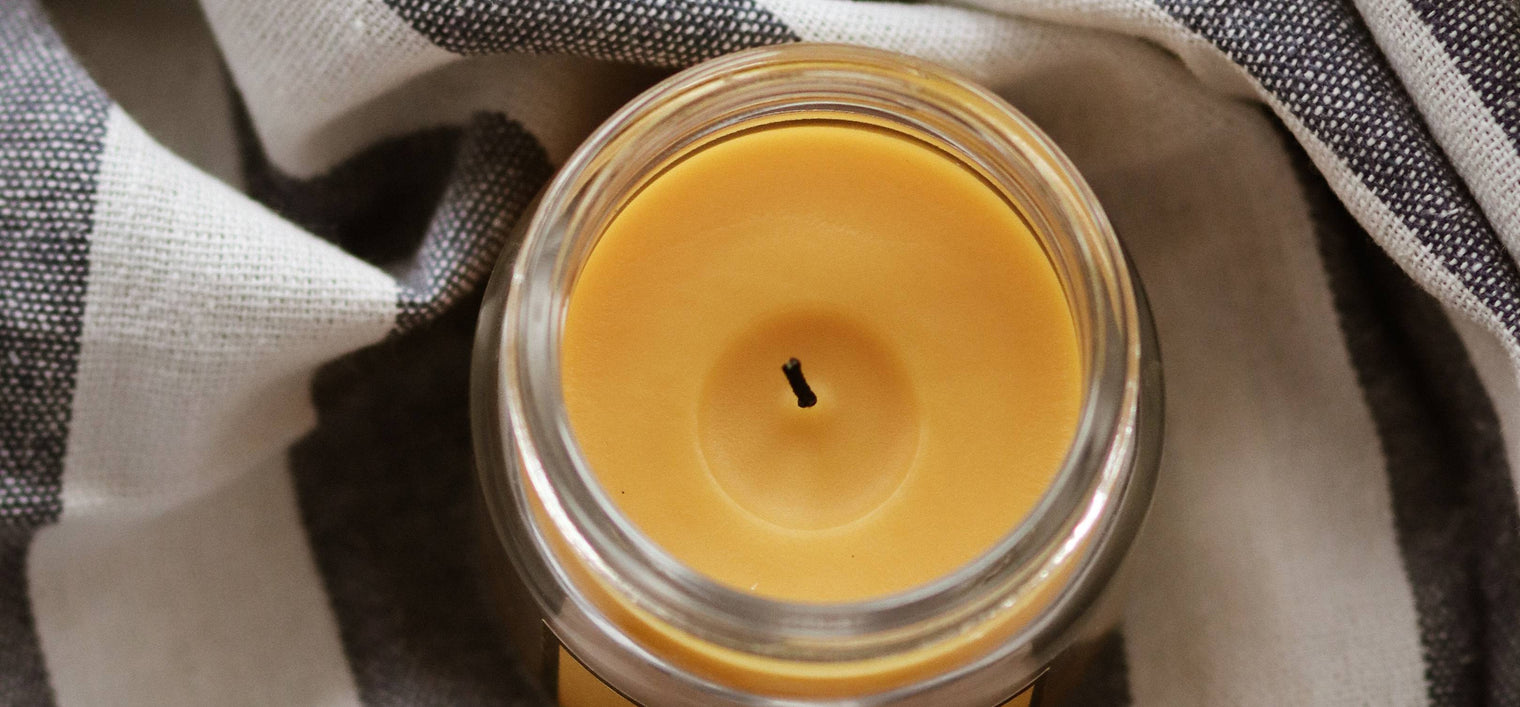Today, millions of people around the world take a lot of comfort in curating the perfect candle collection. It should be no wonder then that the candle industry is one of the fastest growing products in the United States and is showing no signs of slowing down anytime soon.
But candles are not without some ills. If you are one of the millions that currently have a collection, the worst thing to happen to you is to have your candles waste. And candle tunnelling happens to be one of the worst ways your candle can be wasted. it causes your candles to look ugly and it just rids you of the full experience you paid for.
The good news is, you can prevent candle tunneling and fix candle tunnelling as well. This article contains all you need to know about it.
Candle Tunnelling: What is it?
Candle tunnelling occurs when your candle burns down only through its center creating wax to solidify on the outside. This outside wax means your candle will not achieve the maximum burn time creating the waste we spoke about.
And as the flame continues to tunnel down the middle, it releases more wick which will become more difficult to light and would eventually be drowned by the melted wax. Candle tunnelling can happen to any candle irrespective of price or quality. But it does not have to be the end of your candles.
Candle Tunnelling: Common Causes
Candle tunnelling can be caused by a wide variety of factors from candle melting to incorrect wick size. We have outlined some common causes below:
- Using an unstable wax blend:
This is a common yet overlooked cause of candle tunnelling. Occasionally candle makers make the mistake and use an unstable wax blend that triggers an irregular burn rate of the candle. Not all candles are the same and some candles can be engineered to be better in one area and lacking in another area. It is important to read customer reviews about the candle before purchasing to identify such candles before buying them.
- Wrong wick size:
This is another common cause of wick tunnelling. Some candle makers could use a wick that is too small or too big. The danger of using a candle that has a wick that is too small is that it would be unable to generate the right amount of power needed to burn the wax evenly and a wick that is too large could cause the candle to melt faster than it should.
- Non consistent burning practices:
You should always burn your candles for a long period of time to ensure that the wax pool has enough time to reach the edge of the candle container. Putting off a candle to early creates a tunneling candle.
How to Prevent Candle Tunnelling:
- Make sure the candle burns effectively and there is a melting pool;
This is one of the easiest and most effective ways to prevent candle tunneling. By ensuring your candle has a proper burn, you are preventing it from tunneling in the future. To create a melt pool, burn your candle for a long period of time to create an entire top layer of melted wax.
The thing a lot of people do not know about candles is that they have memories. If you turn on your candle for a short time and it does not reach a maximum wax melt pool, it could burn to that same width the next time you turn it on. Doing this could save your candles and prevent your candles from tunnelling in the future. Pay attention to the guide that comes with your candle. These manufacturers know the ideal time needed for a full burn and that should not be overlooked.
- Rectifying a wick that is too short;
If your candle wick gets too short, it could cause candle tunnelling. So, a great way to prevent this from happening is quickly fixing any candle that has a short wick. Your candle doesn’t just burn on its own, it is powered by the burning of the wick. The wicks could also be defective although that is rare. The issue that we see most often is that of a wick not trimmed to the right length.
The first time you put on your candle, the wick is a bit longer. This happens so that when you melt your candle for the first time, the wick left should be ¼ - 1/8th of an inch so that it burns at maximum capacity. A wick that is cut too short will also experience problems because the wick will be put out because it does not have the capacity to support a full melt. The way to fix this Is to scrape off a few layers of wax, exposing the wick to a right level. Don’t worry about the rough looking wick at the top, after another melt pool it will smoothen itself out.
- Keep your room at an optimal temperature
Whether you like to believe it or your environment plays a huge role in candle tunnelling. During the colder seasons, it is important to user your candles in warmer rooms ideally between 18 – 21 degrees centigrade. Colder rooms would cause the candle container to get colder on the outside and will make it harder for the wick can to get the wax to melt. A way to circumvent this is to warm up your room then light your candle when it reaches an ideal temperature.
Another way out of this is to procure a candle cosy. These would keep your candles warm and at the appropriate temperature. You could also choose to buy candles that are in tin. Tin heats up properly and it aids wax melting.
Fixing Candle Tunnelling
If you have a candle that has already begun to experience candle tunnelling, you can still fix it and save your candle depending on how much tunnelling has taken place. Here are a couple of steps you can take to save your candle from tunnelling even more.
My Candle Just Started to Tunnel
Like we discussed earlier, the first burn you have on a candle is very important because it sets the memory of the candle. You can know the memory ring of the candle by finding the indent made by the candle wax upon its first lighting and it generally marks the edge of where future burns will reach.
When you prevent the wax pool to reach the edge on the first burn, you are creating a smaller and less than ideal memory ring to be formed and tunnelling will begin. If you are able to intercept this early enough, you will be able to reset your candles’ memory by allowing the wax to open all the way to the full width of the candle.
A quick and effective way of realigning your candle’s memory ring is to apply a hair dryer set at the highest temperature to the top of the candle. Holding this hot air over the top of the candle until the top layer of wax has melted and has been smoothed out. Remember to practice proper burning next time to ensure the wax pool is fully formed and reaches the edge of the candle.
If your candle has tunneled beyond this point, the next point is for you
The Foil Method
Whole ChannelThis Video
With the foil method, your goal will be to build up as much heat to the top of the candle as much as you can with the hopes of melting the wax build up at the side of your candle to melt. The method is relatively easy but it should be done carefully. The foil can become too hot and you could burn yourself.
Also, do not use this method for an extended period of time because the increased heat can place a strain on your candle container which could cause it to break. Here is a step-by-step way to use this method:
- Turn on your candle safely then extend a layer of foil around the top of your candle creating a domed lid with a hole at the top to allow the heat to stay in ad melt the hard wax on the sides of the candles.
- In an hour or more depending on the size of the candle, you should remove the foil and you should have a good even wax pool and a newly re-set candle. Take extra precaution in removing the foil, it will be hot.
My Candle’s tunneling is really bad
If your candle is experiencing really terrible tunnelling, the methods we discussed above might not work for you. The truth it, your candle can no longer be salvaged but not to worry, there is a lot that can be done to enjoy what’s left of your candle.
- Use a candle warmer:
Think of a candle warmer as a really amazing blanket for your candles. It is very helpful in lighting your candles when it can no longer be lit. it is an electric heater that melts your candles and releases the scents without you worrying about using a flame. It was designed to be used with container candles because it gently releases the scent into the room.


